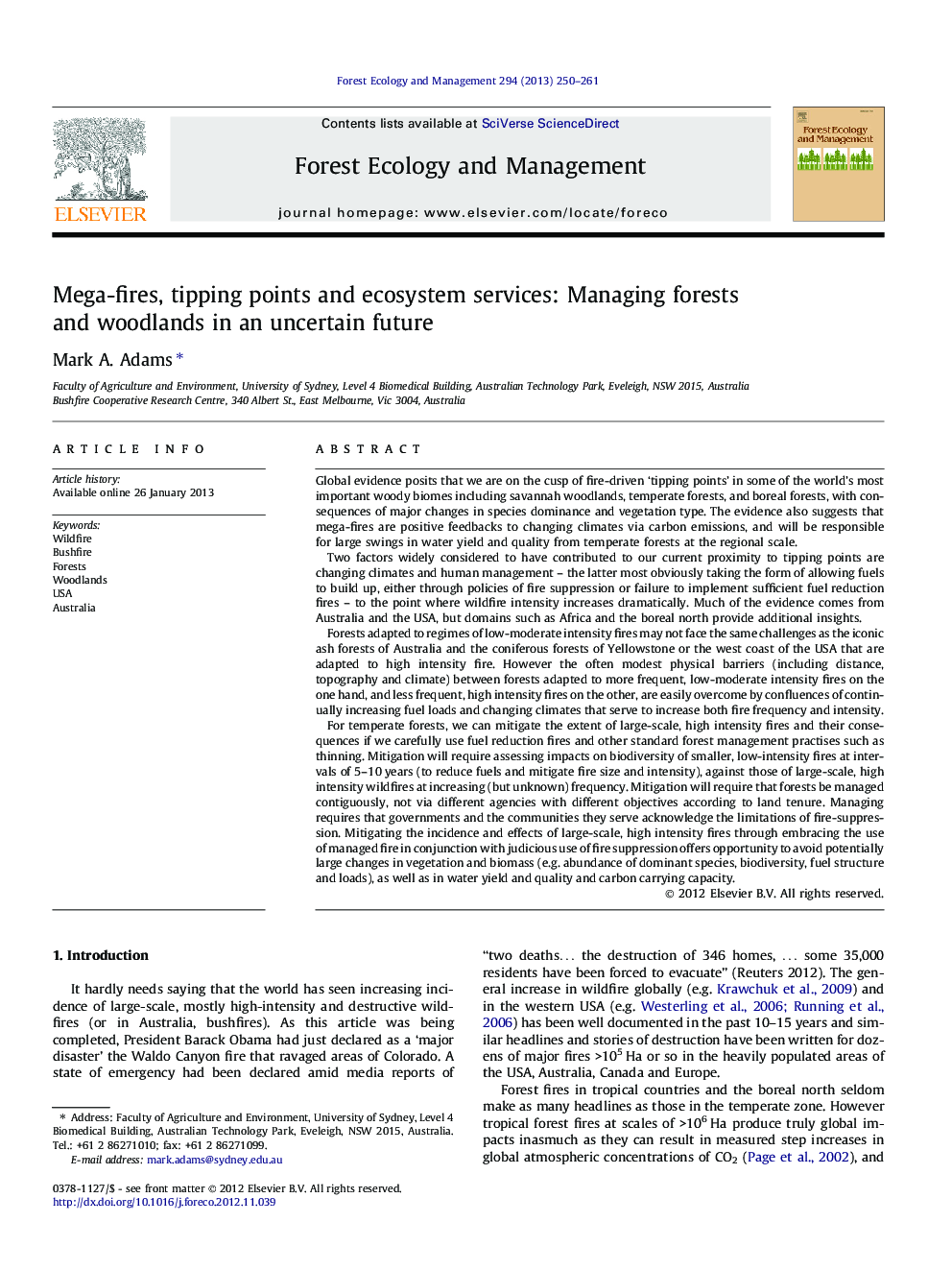| کد مقاله | کد نشریه | سال انتشار | مقاله انگلیسی | نسخه تمام متن |
|---|---|---|---|---|
| 86895 | 159219 | 2013 | 12 صفحه PDF | دانلود رایگان |

Global evidence posits that we are on the cusp of fire-driven ‘tipping points’ in some of the world’s most important woody biomes including savannah woodlands, temperate forests, and boreal forests, with consequences of major changes in species dominance and vegetation type. The evidence also suggests that mega-fires are positive feedbacks to changing climates via carbon emissions, and will be responsible for large swings in water yield and quality from temperate forests at the regional scale.Two factors widely considered to have contributed to our current proximity to tipping points are changing climates and human management – the latter most obviously taking the form of allowing fuels to build up, either through policies of fire suppression or failure to implement sufficient fuel reduction fires – to the point where wildfire intensity increases dramatically. Much of the evidence comes from Australia and the USA, but domains such as Africa and the boreal north provide additional insights.Forests adapted to regimes of low-moderate intensity fires may not face the same challenges as the iconic ash forests of Australia and the coniferous forests of Yellowstone or the west coast of the USA that are adapted to high intensity fire. However the often modest physical barriers (including distance, topography and climate) between forests adapted to more frequent, low-moderate intensity fires on the one hand, and less frequent, high intensity fires on the other, are easily overcome by confluences of continually increasing fuel loads and changing climates that serve to increase both fire frequency and intensity.For temperate forests, we can mitigate the extent of large-scale, high intensity fires and their consequences if we carefully use fuel reduction fires and other standard forest management practises such as thinning. Mitigation will require assessing impacts on biodiversity of smaller, low-intensity fires at intervals of 5–10 years (to reduce fuels and mitigate fire size and intensity), against those of large-scale, high intensity wildfires at increasing (but unknown) frequency. Mitigation will require that forests be managed contiguously, not via different agencies with different objectives according to land tenure. Managing requires that governments and the communities they serve acknowledge the limitations of fire-suppression. Mitigating the incidence and effects of large-scale, high intensity fires through embracing the use of managed fire in conjunction with judicious use of fire suppression offers opportunity to avoid potentially large changes in vegetation and biomass (e.g. abundance of dominant species, biodiversity, fuel structure and loads), as well as in water yield and quality and carbon carrying capacity.
► A review of international research suggests major biomes are exposed to fire-related ‘tipping points’.
► Major changes in species composition and structure in iconic forests may result from exceeding tipping points.
► Ecosystem services will be affected, especially carbon sequestration capacity and water yield.
► Mitigation of deleterious outcomes requires active management of fuels in future.
► Integrating land management across tenures will be required if mitigation is to succeed.
Journal: Forest Ecology and Management - Volume 294, 15 April 2013, Pages 250–261